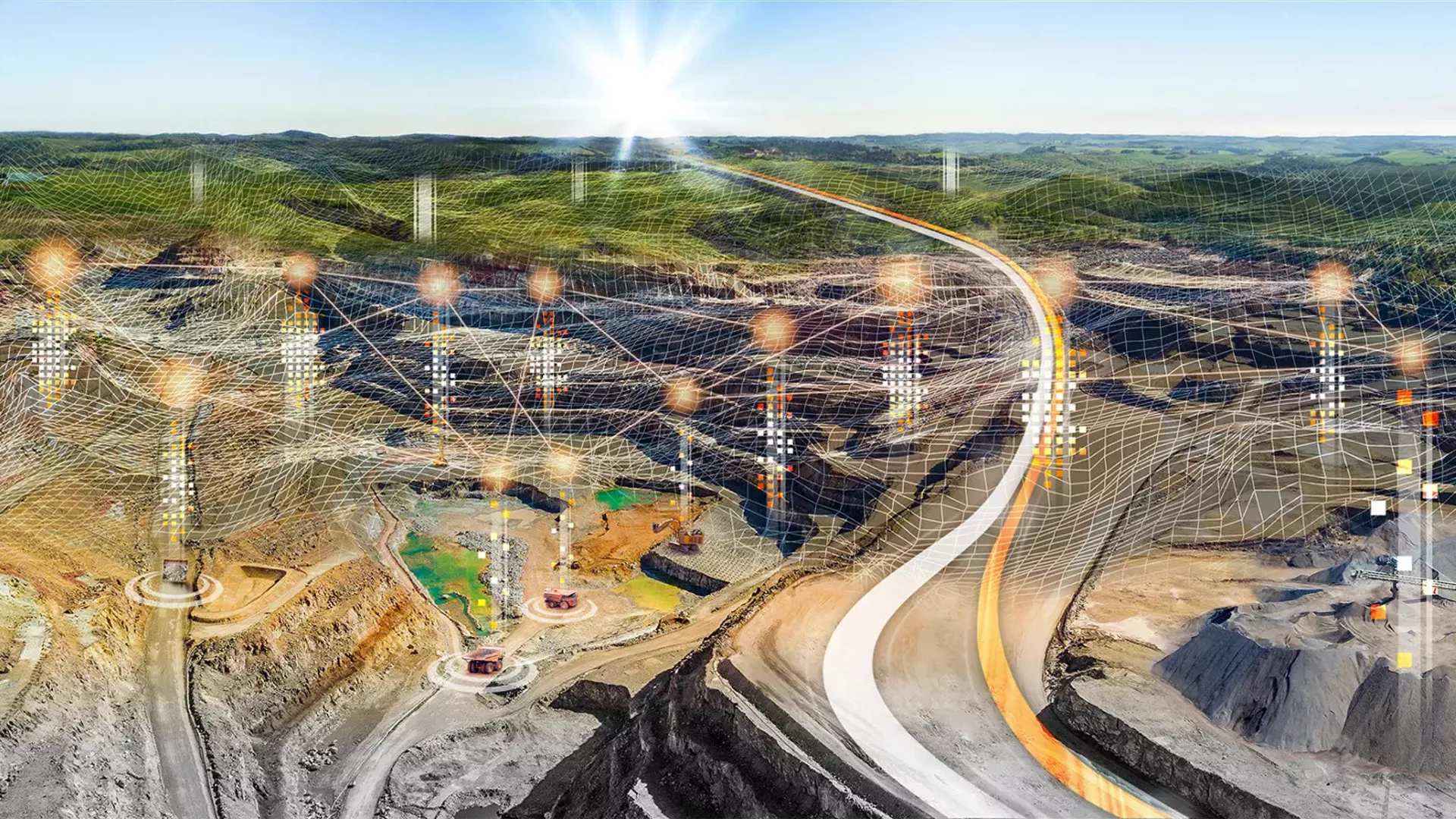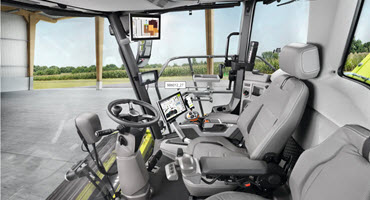MAN is focusing on decarbonisation of drive systems off the road
Locally CO2-free solutions planned for ships and off-road applications. In the long term, battery technology and hydrogen for the decarbonization of agricultural and construction machinery as well as power generators. MAN Truck & Bus is accelerating its transformation and taking major steps towards emission-free drives. In the case of commercial vehicles, the focus is clearly on battery-electric drives. For MAN Engines – a business unit of MAN Truck & Bus – the decision to decarbonize special applications is the same: "Our goal is to transform our portfolio so that we offer our customers solutions in agricultural and construction technology, for watercraft and in power generation that do not release CO2 locally," says Mikael Lindner, Head of MAN Engines. MAN Engines' customers come from very heterogeneous industries such as commercial shipping, agricultural machinery and power generation. This means different requirements for the drives, different availability of fuels and different available installation space for energy storage. In the medium and long term, therefore, a wide range of drive concepts will be available. "In the future, MAN Engines will be relying on pure combustion engines for hydrogen and regenerative fuels, battery storage systems and also complete electric drive systems to meet the various requirements in order to operate vehicles and machines locally with the lowest CO2 emissions," explains Mikael Lindner. MAN Engines already offers a wide range of products that take into account the requirements of the industry and at the same time take advantage of opportunities to reduce CO2 emissions. "We have already presented and are also using solutions that contribute to decarbonization. We see the bridging technologies available today as an opportunity for the energy transition that takes into account the framework conditions of the market," says Lindner. These available technologies include stationary biogas engines, hybrid and dual-fuel engines, and the release of engines for the use of renewable and alternative fuels. Stationary hydrogen engine for combined heat and power generation on the test bench. MAN Engines envisions the following technologies in its portfolio in the short, medium or long term to support customers in decarbonizing their products: Battery storage and integrated e-drive systems: In Nuremberg, battery packs will be manufactured in in-house large-scale production. In addition to their use in the Group's own vehicles, these batteries and electric powertrains will also be available to OEM manufacturers of agricultural and construction machinery as well as watercraft in the future. In the area of electricity storage, in addition to the use of new products (1st Life), the secondary use of batteries (2nd Life) also comes into play. Battery storage. Hydrogen combustion engines: The hydrogen combustion engine can be a supplement or alternative to battery-electric drives in applications with high flexibility requirements - for example, where the charging infrastructure is inadequate. This can be, for example, in the maritime or off-road sector, but also stationary for combined heat and power. The picture shows the H3268 stationary hydrogen engine for combined heat and power, which has been on the test bench since the beginning of May. Hybrid systems: The MAN Smart HYBRID Experience was presented for the first time in 2021 for yacht applications. Because it can be combined with all MAN marine engines of the current D2862 (V12), D2868 (V8) and D2676 (R6) series, engines for light, medium and heavy applications in commercial shipping can also be expanded in terms of performance. This means that total system outputs per powertrain from 147 kW to 1,838 kW (200 hp to 2,500 hp) can be achieved and hybridization levels of up to 71 percent of the total output can be achieved. The high-voltage battery of the plug-in hybrid system is charged via the integrated shore connection or by the diesel engines or on-board units while driving. The MAN Smart HYBRID Experience enables driving and anchoring without any emissions in battery-electric mode. Hydrogen dual-fuel engines: The world's first hydrogen-powered crew transfer vessel for offshore wind farms was launched on May 10, 2022. What's special about it is that the "Hydrocat 48" from the Dutch shipyard Windcat Workboats uses two tried-and-tested MAN D2862 marine engines, which are usually powered by hydrogen. They were prepared by MAN Engines for dual-fuel operation, i.e. for the use of two different types of fuel, and supplemented with a hydrogen injection system. The use of hydrogen reduces CO2 emissions in the exhaust gas by an average of about 50% and even up to 80% as a peak value. It is not necessary to optimize conventional marine engines for hydrogen. Regenerative diesel/HVO: Marine and off-road engines are approved for use with regenerative diesel – also known as HVO (hydrogenated vegetable oil). Customers can use it to re

Locally CO2-free solutions planned for ships and off-road applications. In the long term, battery technology and hydrogen for the decarbonization of agricultural and construction machinery as well as power generators.

MAN Truck & Bus is accelerating its transformation and taking major steps towards emission-free drives. In the case of commercial vehicles, the focus is clearly on battery-electric drives. For MAN Engines – a business unit of MAN Truck & Bus – the decision to decarbonize special applications is the same: "Our goal is to transform our portfolio so that we offer our customers solutions in agricultural and construction technology, for watercraft and in power generation that do not release CO2 locally," says Mikael Lindner, Head of MAN Engines.
MAN Engines' customers come from very heterogeneous industries such as commercial shipping, agricultural machinery and power generation. This means different requirements for the drives, different availability of fuels and different available installation space for energy storage. In the medium and long term, therefore, a wide range of drive concepts will be available. "In the future, MAN Engines will be relying on pure combustion engines for hydrogen and regenerative fuels, battery storage systems and also complete electric drive systems to meet the various requirements in order to operate vehicles and machines locally with the lowest CO2 emissions," explains Mikael Lindner.
MAN Engines already offers a wide range of products that take into account the requirements of the industry and at the same time take advantage of opportunities to reduce CO2 emissions. "We have already presented and are also using solutions that contribute to decarbonization. We see the bridging technologies available today as an opportunity for the energy transition that takes into account the framework conditions of the market," says Lindner. These available technologies include stationary biogas engines, hybrid and dual-fuel engines, and the release of engines for the use of renewable and alternative fuels.

Stationary hydrogen engine for combined heat and power generation on the test bench.
MAN Engines envisions the following technologies in its portfolio in the short, medium or long term to support customers in decarbonizing their products:
Battery storage and integrated e-drive systems: In Nuremberg, battery packs will be manufactured in in-house large-scale production. In addition to their use in the Group's own vehicles, these batteries and electric powertrains will also be available to OEM manufacturers of agricultural and construction machinery as well as watercraft in the future. In the area of electricity storage, in addition to the use of new products (1st Life), the secondary use of batteries (2nd Life) also comes into play.

Battery storage.
Hydrogen combustion engines: The hydrogen combustion engine can be a supplement or alternative to battery-electric drives in applications with high flexibility requirements - for example, where the charging infrastructure is inadequate. This can be, for example, in the maritime or off-road sector, but also stationary for combined heat and power. The picture shows the H3268 stationary hydrogen engine for combined heat and power, which has been on the test bench since the beginning of May.
Hybrid systems: The MAN Smart HYBRID Experience was presented for the first time in 2021 for yacht applications. Because it can be combined with all MAN marine engines of the current D2862 (V12), D2868 (V8) and D2676 (R6) series, engines for light, medium and heavy applications in commercial shipping can also be expanded in terms of performance. This means that total system outputs per powertrain from 147 kW to 1,838 kW (200 hp to 2,500 hp) can be achieved and hybridization levels of up to 71 percent of the total output can be achieved. The high-voltage battery of the plug-in hybrid system is charged via the integrated shore connection or by the diesel engines or on-board units while driving. The MAN Smart HYBRID Experience enables driving and anchoring without any emissions in battery-electric mode.
Hydrogen dual-fuel engines: The world's first hydrogen-powered crew transfer vessel for offshore wind farms was launched on May 10, 2022. What's special about it is that the "Hydrocat 48" from the Dutch shipyard Windcat Workboats uses two tried-and-tested MAN D2862 marine engines, which are usually powered by hydrogen. They were prepared by MAN Engines for dual-fuel operation, i.e. for the use of two different types of fuel, and supplemented with a hydrogen injection system. The use of hydrogen reduces CO2 emissions in the exhaust gas by an average of about 50% and even up to 80% as a peak value. It is not necessary to optimize conventional marine engines for hydrogen.
Regenerative diesel/HVO: Marine and off-road engines are approved for use with regenerative diesel – also known as HVO (hydrogenated vegetable oil). Customers can use it to replace – or mix – conventional diesel fuel and use MAN engines with so-called green or renewable diesel. This is obtained on the basis of waste and residues of animal and plant origin, cellulosic biomass materials such as crop residues, among others. HVO saves up to 90% of greenhouse gas emissions in the exhaust gas compared to conventional diesel.
Customer Service: In addition to MAN Engines products, the international network of service companies and partners also plays a key role on the road to decarbonisation. More than 1,650 service outlets ensure regular engine maintenance. These ensure cleaner combustion and thus reduce the risk of increased fuel consumption. MAN Engines offers one way to conserve resources through the sustainable reconditioning of used parts such as coolant pumps, flywheels or cylinder heads. However, complete engines are also remanufactured in a separate business unit of MAN Truck & Bus. This conserves important resources by reusing old parts. Added to this is the energy saved – and thus also CO2 – through reprocessing instead of new production.
www.man.eu
Powered by
Induportals Media Publishing

 machineryasia
machineryasia 





